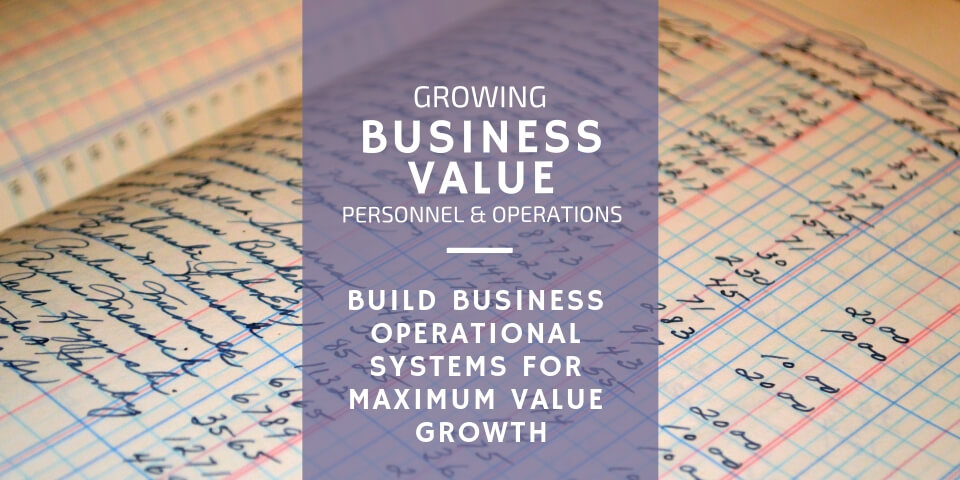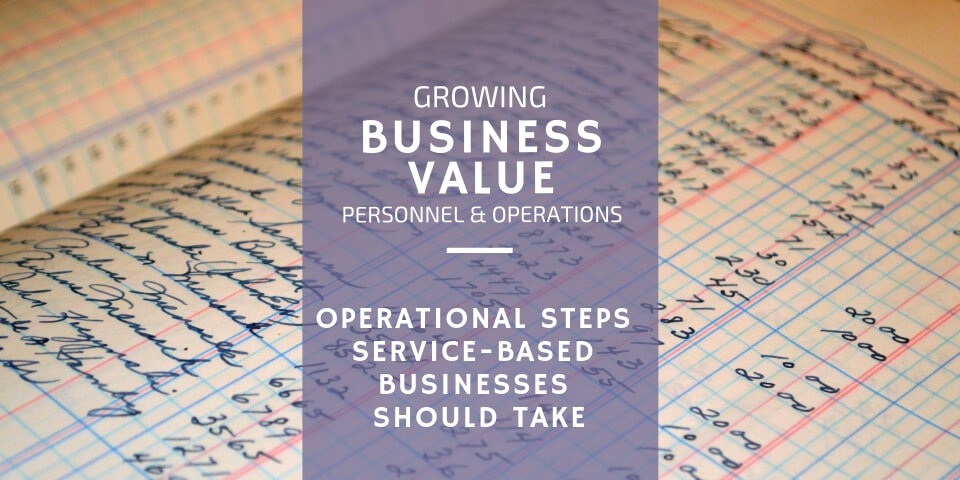
Build Business Operational Systems for Maximum Value Growth
March 1, 2019
3 Operational Issues that Weaken Your Business’s Infrastructure
March 6, 2019Operational Steps Service-Based Businesses Should Take

To effect growth in your business, having well-defined steps in your business operations is a must, no matter how big or small the company. Even the smallest improvement to the management of a process will yield positive results. Since I work with more service-based businesses than manufacturing-based businesses, I want to give you the operational steps you need in place in your service-based business.
Podcast Time Index for “The Operating Elements of a Service Business”
00:46 – The Operating Elements of a Service Business
01:14 – What is a Service Business?
01:56 – The Master Blueprint
03:29 – Design & Engineering
05:09 – Account and Order Management
06:10 – Project and Production Management
06:56 – Procurement
07:48 – Materials and Inventory Management
08:42 – Facilities Management
09:11 – Tools and Tech
09:45 – Resourcing
10:56 – Quality and Risk Management
11:59 – Field Operations
12:40 – Distribution
13:44 – Packaging
14:05 – Work on Your Business, not in Your Business
15:43 – Managerial Systems
16:40 – Customer Service
19:11 – Management Reporting
19:49 – Master Data
20:23 – IT
21:05 – Talent Training
21:20 – Closing
Be sure to listen and follow my podcast on Stitcher, Spotify, iTunes, and Libsyn.
12 Business Operational Steps You Need to Take
As an owner of a small business, you tend to be the operational guru, or the Chief Operating Officer, among many other titles you carry. Your job is to provide a service to your customers, clients, or patients from start to finish. Inevitably, there are several steps your company and employees must take along the way. Therefore, I want to go over the operational steps you need in place to make your job easier and your customers happier.
#1 – Design and Engineering
First, you need to design your offering. Determine what exactly you are giving your customers. Design and Engineering is not just for manufacturing. Even service business must design the specific offering for their customer base.
#2 – Workflows for Order Taking
Next, you need to develop a workflow for what takes place when customers call and place an order for your service offerings. Which team members answer the phone call? What do they say? What happens after the phone call?
#3 – Project Management
After receiving an order, what do you do next? Who will manage the project and which team members need to help? What type of support will the team members need to fulfill the order?
#4 – Procurement
In step number four, you’re going to formalize the relationship with the customer who placed the order. Develop a written agreement or an online agreement the customer will sign as an indication to begin work.
#5 – Material Management
Once the formal order has been procured, you need to gather and assess the materials and equipment you’ll need to complete the work. Is the equipment you need operating efficiently? Is it in working order? Do you have all of the materials you need on hand, or do you need to order them?
#6 – Facilities Management
Then, you need a workflow to determine where and how you will store and maintain the materials and equipment you need for the order.
#7 – Technology Management
As you’re assembling materials you need for the customer’s order, what technology do you need to make the entire process quicker? Do you need laptops, tablets, etc? Can you take and send pictures for job approvals? Basically, what steps do your team members need to take with technology to make the work more systematic?
#8 – Team Member Management
Speaking of team members, do you have enough on staff to fulfill this order? What about this order combined with all of your current orders? Will you need employees to work overtime, or will you need to hire new team members? Essentially, do you have the people you need to work efficiently?
#9 – Quality Control Management
Additionally, how will you implement quality control when team members are working on the job? In other words, what can you do to ensure team members are doing their jobs? How do you reduce callbacks and complaints?
#10 – Sales Management
While your team members are working on the current orders, who’s out in the field trying to procure more orders? How are you ensuring you’ll have new orders once you complete the others?
#11 – Distribution
Then, you get into distribution. If you’re selling a product along with your services, how will you distribute that product? What does that process look like?
#12 – Packaging
Finally, how are you packaging your products? OR how are you finalizing your service provisions? Will you provide your customers with professional quality pictures of the services you have provided? What will you do to show off what you’ve done?
Why Establishing Operational Steps Matters to Your Business
See, by having these 12 different business operational steps, or workflows, in place, you can build your business to the point where YOU are not necessary to its day-to-day activities. As a business owner, your goal should be to work ON your business, not IN your business. You’re never, ever, ever, ever going to get out of working IN your business until you build and develop these business workflows. You’ll still be putting out daily fires years from now. The only way to keep from working IN your company is to develop these systematic workflows to provide for customer needs.
RELATED READING: Workflows & Systems: Essential Ways to Improve Business Efficiency
For information regarding the managerial systems you need in place to make your business scalable, check out my article Business Scalability…Turbocharging Your Company’s Value.



